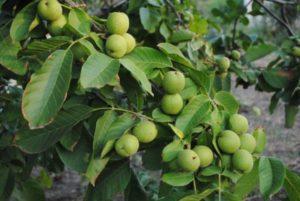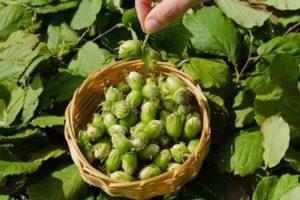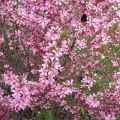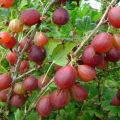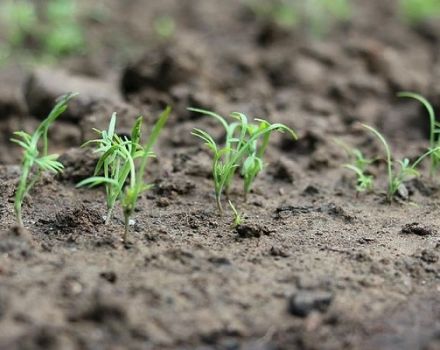Description and characteristics of the best varieties and types of almonds, planting and care
Everyone knows the almond. But since it grows in the south, the inhabitants of the northern regions have a poor idea of a tree that feeds us with useful fruits. All the more little is known about the types of almonds, only to those who are engaged in the cultivation of crops.
General description of the plant
Although it is known about 3 varieties of almonds: sweet, bitter and thin-walled, there are many varieties of the plant, and they have their own characteristics and differences. You can try to grow hardy almonds, which are successfully cultivated in areas with moderately cold winters.
What all types of culture have in common is that it:
- has the shape of a tree up to 5-6 meters high or a bush;
- blooms earlier than leaves appear;
- covered with single white or pinkish buds from April to May;
- in June-July or September bears fruit with drupes, pubescent with green or gray hair.
Inside the drupe is a nut, which is an oval, nail-like seed. It is a valuable product containing many trace elements, vitamins, substances that have a positive effect on the human body.
Almond varieties
Breeders have worked on common almonds and developed varieties that, in addition to their nutritional value, are highly decorative. You can choose the variety of almonds, the description of which will tell you what exactly it should be grown in the garden.
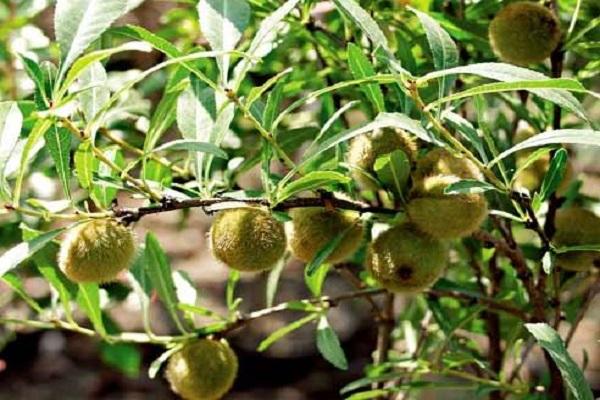
Sweet Dreams
Low-growing bushes of the almond variety reach a height of 1.5 meters. The plant belongs to a variety of steppe bean. Attention is drawn to the reddish bark of the stems and the spherical crown. Planting crops look beautiful when the shrub is covered with bright pink flowers with a diameter of 2 centimeters. The bean variety blooms in the 3rd year of life, and bears fruit in the 5th. Flowering begins in May and lasts 2 weeks.
The advantage of growing almonds is that it:
- resistant to frost;
- tolerates drought well;
- undemanding to the composition of the soil;
- can grow in partial shade.
The shrub needs feeding and abundant moisture without stagnant water.
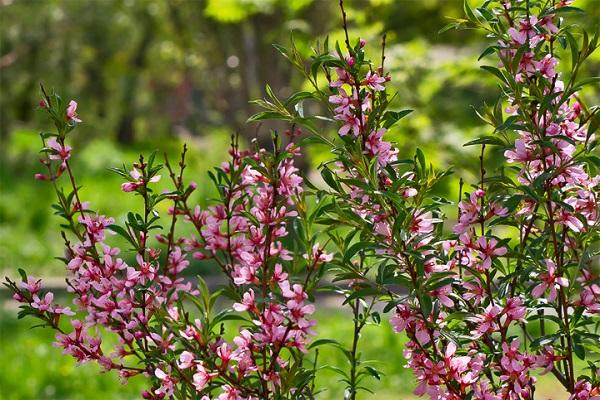
Victoria
This type of almond is suitable for steppe regions. A medium-sized shrub grows successfully during periods of heat and drought. But it also tolerates frosts below 20 degrees well. The plant is suitable both for site design and for obtaining tasty fruits. After 5-6 years, you can harvest almond drupes to feast on nuts.
Three-bladed
An exclusively ornamental shrub is not intended for fruiting. Even before the foliage appears, almond blossoms begin.The diameter of the corolla is about 2 centimeters. Flowers are arranged in pairs. The color scheme of the buds ranges from white-pink to lavender, lilac. Dark green leaves bloom later, they are three-lobed structure. To make the flowering lush, cut the shoots. For 2-3 weeks, a lush cloud with a pleasant smell will decorate the site.
The species is characterized by resistance to frost, drought, and disease.
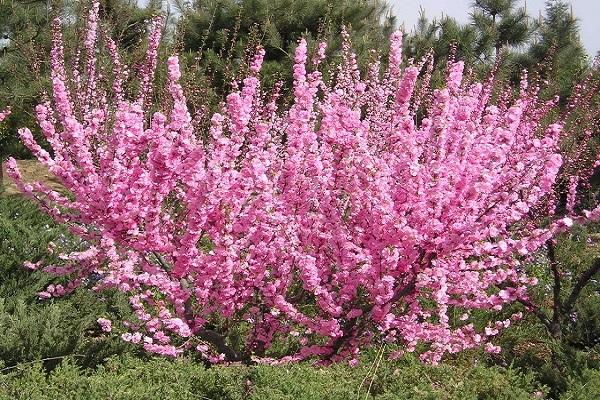
Coastal
The almond tree reaches a height of 2-3 meters. In the 4-6th year of growth, rich yields of sweet nuts are obtained. From 1 adult tree, up to 13 kilograms of a healthy oily product is collected. The tasters rate the nut flavor at 4.6 points.
You can grow almonds everywhere: it tolerates low temperatures and prolonged drought.
When planting, it is worth placing trees with female and male flowers next to it, otherwise few ovaries will form. The variety prefers fertile soils, lighted areas.
White sail
An ornamental shrub grows up to 3 meters high. In early May, the crown is covered with snow-white flowers. Small inflorescences form a fragrant cap, pleasing with their beauty from 14 to 20 days. The almond variety is zoned in the southern regions. It tolerates drought well.
For a variety of culture, they create comfortable conditions so that cold winds do not act on the bushes. Almonds do not like sudden changes in temperature.

Anyuta
As a low-growing variety of bean, the variety is used in landscape design as a hedge. Straight shoots grow up to 1.5 meters. The bushes tolerate drought and winter cold well.
In May, bright pink flowers with a diameter of more than 2 centimeters appear on the branches. At the end of summer, fruits appear with a sweet nut inside. Almonds are valued for their unpretentiousness in care, undemanding to growing conditions.
Dream
Almonds are created as a species of steppe bean. The spreading shoots of the plant form the shape of a shrub a meter high. Thanks to the spherical crown, culture is used to solve landscape design problems. The bush differs:
- large pink flowers in a rich tone;
- long narrow leaves of gray-green color;
- fruits of medium size, slightly pubescent.
The buds form before the leaves in May, and the fruits ripen in July.

Amaretto
Amaretto almonds are designed for temperate latitudes, as they can survive low temperatures of minus 30 degrees. An adult tree reaches a height of 3 meters, has a spreading crown. Almonds are grown for the sweet nut harvest. With good care, you can get up to 15 kilograms of dessert product from a tree. Each fruit reaches a mass of 4 grams.
The disadvantages of the variety include self-infertility. Therefore, Praline trees are planted nearby for pollination. The plant bears fruit well in lighted places, without shade, fertile soils. The advantage of the tree is that little growth is formed on it, hence the rich harvests. The plant develops without being damaged in regions with cold winters up to 35 degrees below zero.
Michurina
The winter-hardy type of almond was brought out by Michurin. He gave life to other varieties of plants resistant to severe winter cold. Although the undersized shrub bears fruit with edible drupes, its main purpose is decorative. Lush bushes flowering 2-3 weeks are used for hedges, background decoration of flower beds. It is important that the shrub grows better in lighted areas.
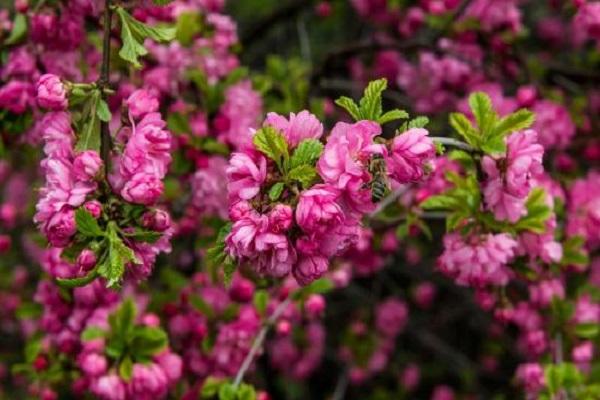
California
One of the common varieties of almonds is California. In America, it is the most popular nut crop. Varieties of different ripening periods have been bred. They are famous for their delicious large to medium-sized buttery nuts. Some of them are wrinkled, others with a smooth surface. The product is used for the preparation of desserts, drinks, in the cosmetic industry.
Dessert
A medium-ripening variety begins to bloom in early May, when the plant has reached the 3rd year of life. It is a tall tree culture with a spreading crown and ends of branches hanging down.
The fruits appear in September. Inside the shell is an easily peeled nut. It has a dessert taste and aroma. The advantages of culture include the fact that the plant:
- tolerates frost;
- gives up to 15 kilograms of nuts;
- has a strong immunity to fungal and viral infections;
- tends to form dual-nut nuts.
For fruiting, the tree needs pollinators, which are planted at a distance of 2-3 meters.
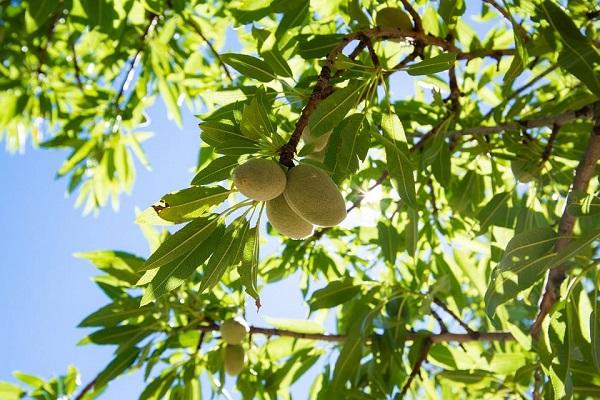
Almond Volgograd
This type of almond has decorative qualities. It is suitable for dry steppe areas. The Volgograd variety is valued for its unpretentiousness. The shrub begins to bloom with pink buds in late April. The leaves of the variety are narrow, gray-green. Bobovnik bears fruit in late summer.
Foros
The hybrid has a dessert purpose, therefore it differs:
- high yields;
- large fruits with easily detachable shells;
- average ripening periods.
Almonds grow in the form of a tree with a dense crown. In May, it is covered with a pink cloud of flowers. Then narrow leaves of a dark green color appear. The fruits are harvested in September. The Foros variety has many advantages, but it is adapted for growing in the North Caucasus region, Crimea.
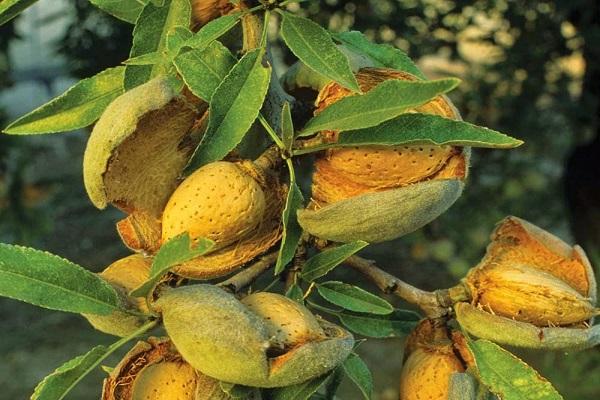
Praline
Almonds bloom later than other varieties, when the threat of return frosts has passed. The plant belongs to medium-sized. The crown is broadly oval, of medium density. Praline's fruits are large, weighing from 3 to 6 grams. Nuts are distinguished by a sweet, oily taste, a pleasant aroma. They are easily separated from the soft shell.
Pink flamingo
The undersized bean is interesting for its bright pink small double flowers. They cover the shoots completely, so that the bush becomes a decoration of the site for about 2-3 weeks. The bushes are used in single groups, hedges.
Pink fog
The beauty of blooming almonds will fascinate for a long time. Flowering lasts longer in the sun than in the shade. Delicate shoots covered with large flowers create a festive mood in the country from May to April.
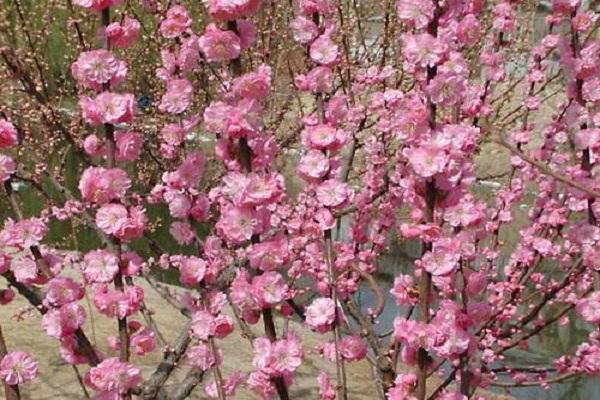
Georgian
The walnut shrub is cultivated in the Caucasus. The Georgian type of almond is suitable for breeding work. Its positive qualities: unpretentiousness, frost resistance, strong immunity - are used to create new varieties. In addition to being highly decorative, the plant bears fruit. But it does not differ in high yields.
Ledebour almond
The prevalence of the hybrid is high in the Altai Territory. The climate and weather conditions are comfortable for cultivating a decorative look. It blooms in April, and the petals fly around after 3 weeks. Large dark green leaves form a lush crown.
Petunnikova
This type of almond shrub is cultivated in the gardens of Central Asia. Erect shoots grow, forming a dense spherical crown. Small dark pink buds appear on brownish branches. They last 2 weeks. The leaves are lanceolate, dark green, have a sharp point at the end and notches along the edges. The fruits ripen in September. They are small, covered with an orange shell.
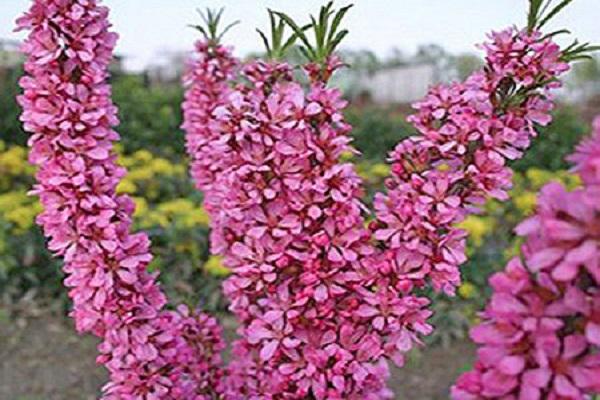
Antik
Almond variety of the Crimean selection bred by the originator A. Richter. A tree grows up to 3 meters. It has a wide crown. The fruits appear in September-October. Drupes are large, weighing up to 4 grams. The kernels are easily separated from the shell. Yields increase every year, reaching a peak in the 9th year of the tree's life. You can collect up to 5 kilograms of dry fruits from a plant. Almonds need pollinators to bear fruit. Better to choose the variety Delon, Ayan. The culture is cultivated in the south.
Spicy
Nikitsky Botanical Garden of Crimea offers almonds:
- in the form of a vigorous tree with a wide dense crown;
- entering fruiting in the 4th year of life;
- ripening in mid-September;
- frost-resistant;
- with yields of 12 kilograms from 1 tree.
The fruit has a soft and thin shell, the kernels are sweet, buttery.
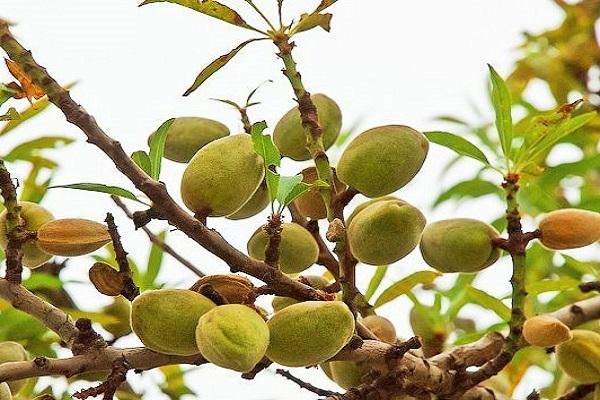
How to grow
You can get a good harvest of almonds or grow an ornamental bush if you follow the rules for planting a crop. Choose only annual seedlings. Planting is carried out in spring or autumn. For areas with a temperate climate, it is better in early March. It is preferable to choose an area with good lighting, closed from wind and drafts.
Landing pits are prepared in advance. Their dimensions correspond to 50 x 70 x 70 centimeters. The distance depends on the varieties of almonds chosen for planting. Trees need a gap of 5-6 meters, bushes - 2-3 meters.
The soil on the site should be neutral in acidity, fertile. The land on the site is mixed with humus, peat, a small amount of sand.
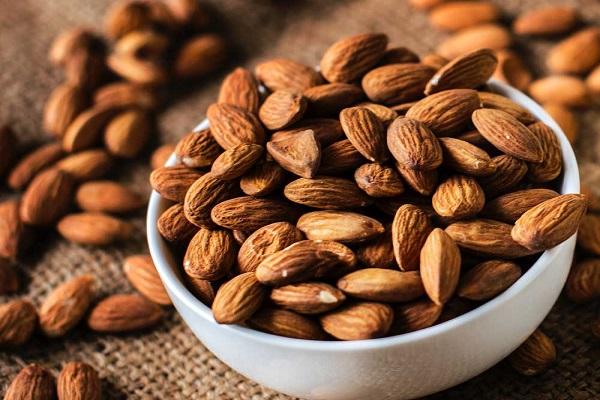
The seedling is placed in the center of the pit, a peg is driven in next to it. Sprinkle the roots with soil so that the root collar is 5-6 centimeters above the ground surface. After compaction of the near-stem circle, the soil around the seedling is watered and mulched.
Almond care
For better fruiting, the culture needs:
- Feed. In the spring, the introduction of ammonium nitrate or manure is suitable. In autumn, potash-phosphorus fertilizers are needed.
- Water. It is necessary to constantly monitor the condition of the soil around the tree. As soon as the soil begins to dry out, water it. 1 plant needs 10 liters of water.
- Trim. Sick and damaged branches are cut in the spring. After flowering, annual shoots are shortened.
- Prepare for winter. In autumn, the ends of the branches are pinched, removing the apical buds. Stamp types are covered with non-woven material, spruce branches.
Taking care of the plant is not difficult. Decorative species tolerate bad weather and cold well. Fruiting can only be planted in the south.
